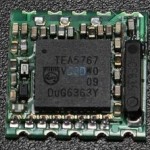Projects: Make your own Plasma-Arc Audio Speaker
Living in North Texas. I have been seeing plenty of electrical arcs lately, due to the unprecedented storms we have been having through the month of May. A few of these arcs have been destructive — one of our sound system amps at our church started billowing out acrid smoke about the same time that we had a very close lightning strike, another local church took a direct hit a few weeks ago, and just the other day my friend Roger KE5YTA lost a radio power supply due to a very close strike. Another friend, Don AE5DW in Louisiana took a direct strike two weeks ago and basically lost everything electronic in his house.
Aside from the sights and smells that lightning and electrical arcs can create, they usually make a loud and obnoxious noise. That’s why I was impressed when I saw the DIY Plasma Speaker on Instructables today. Instructables member [tanner_tech] used a classic 555 Timer IC and a flyback transformer, high-voltage mosfet, and a fast diode from an old TV to make music. Literally, you plug in any sound source and it creates (surprisingly) high quality audio from about a one inch high voltage electrical arc. Visit the Instructable here and watch his YouTube video below — if you want to skip the technical stuff the music starts at about 3:10. Then you just might want to go back and watch the technical stuff.
Published from DFW, Texas





